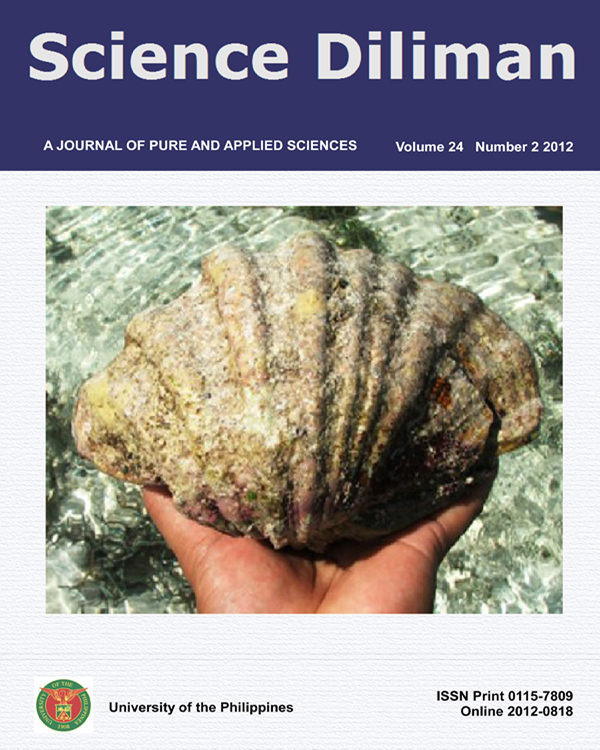Assessment of acute toxicity of thiamethoxam (Actara® 25WG) to Achatina fulica and its potential ecological applications
Abstract
Achatina fulica is considered as one of the world’s worst invasive species and is known to cause ecological disruption as well as agricultural and health problems in the Philippines. The study evaluated the use of the insecticide thiamethoxam (Actara® 25WG) in the control of A. fulica populations. This was done by performing an acute toxicity test of thiamethoxam to A. fulica. Six individuals each were exposedto thiamethoxam concentrations of 0, 50, 100, 200, and 400 μg/L for 72 hours. The percent mortality was then determined after the exposure period. Probit analysis was used to determine the LD50 of thiamethoxam to A. fulica. The LD50 was found to be 662.95 ± 172.98 μg/L. Using the mean body weight of the snails, the LD50 per body weight of A. fulica was determined to be 90.09 ± 23.60 μg/kg. This is 70 times lower than the recommended application of thiamethoxam on field. Thus, normal application would eliminate A. fulica. However, because the LD50 to A. fulica is higher than that for other beneficial non-target species such as honey bees (0.03 μg/bee), the use of thiamethoxam in the control of A. fulica populations is only recommended when in conjunction with the control of target pest insects.
Issue
Section
Articles
Keywords
Ecotoxicology, acute toxicity
Submission of a manuscript implies: that the work described has not been published before (except in the form of an abstract or as part of a published lecture, review, or thesis); that it is not under consideration for publication elsewhere; that its publication has been approved by all co-authors, if any, as well as by the responsible authorities at the institute where the work has been carried out; that, if and when the manuscript is accepted for publication, the authors agree to the automatic transfer of the copyright to the publisher; that the manuscript will not be published elsewhere in any language without the consent of the copyright holders; that written permission of the copyright holder is obtained by the authors for material used from other copyrighted sources; and that any costs associated with obtaining this permission are the authors’ responsibility.



